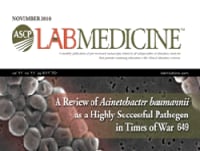Abstract and Introduction
Abstract
Objective: The likelihood of common bile duct (CBD) stones considers liver blood tests (LBTs) if they are markedly altered only. The aim of our study was to find a reliable tool based on LBTs to predict the presence of CBD stones.
Methods: We retrospectively considered all patients who underwent magnetic resonance cholangiopancreatography (MRCP) because of suspected CBD stones from January 2014 to June 2019. Demographic, clinical data, and LBT values were collected and analyzed.
Results: We selected 191 patients, 64 (33.5%) with positive MRCP and 127 (66.5%) with negative MRCP. The analysis showed that our compound LBT-based score had 83.6%, 90.7%, and 90.6% sensitivity, specificity, and negative predictive values, respectively, in determining MRCP results.
Conclusion: We designed a weighted score with high diagnostic power in determining MRCP results that could help in differentiating between candidates for primary cholecystectomy and patients who benefit from preoperative MRCP.
Introduction
Gallstones are a common disease worldwide, affecting up to 21% of the general population.[1] Approximately 35% of patients with gallstones develop symptoms or complications.[2] Medical conditions such as biliary colic, jaundice, pancreatitis, cholecystitis, and cholangitis are common indications for hospital admission.[3] Up to 15% of patients with symptomatic gallstone disease have common bile duct (CBD) stones, which may be asymptomatic in 5% to 12% of patients or lead to more severe conditions.[4]
Patients admitted to the hospital with biliary colic are usually evaluated with clinical history, physical examination, blood tests, and abdominal ultrasound,[5] not only to confirm the diagnosis of gallstones but also to evaluate the risk of CBD stones, because missing their occurrence can result in complications such as cholangitis, acute biliary pancreatitis, and symptomatic choledocholithiasis.[5] The guidelines of the European Association for the Study of the Liver support the routine use of serum liver biochemical tests and abdominal ultrasound as the initial evaluation to stratify the risk of CBD stones. American, European, British, and German societies’ guidelines suggest predictors for CBD stones and propose management algorithms.[6–9] Most societies advocate preoperative endoscopic retrograde cholangiopancreatography (ERCP) in patients with a high likelihood of CBD stones, whereas magnetic resonance cholangiopancreatography (MRCP), endoscopic ultrasonography (EUS), or intraoperative cholangiography are indicated in case of intermediate probability. Finally, patients with a low probability of CBD stones should undergo a cholecystectomy with or without an intraoperative cholangiography.
Therefore, clinical suspicion, abdominal ultrasound, and liver blood tests (LBTs) play the main role in predicting the presence of CBD stones. However, none of them has an adequate sensitivity or specificity when used alone, and the recent literature is still controversial.[5,10,11] The aim of our study was to develop a mathematical equation based on LBT values and to use it as a score to predict the presence of CBD stones.

